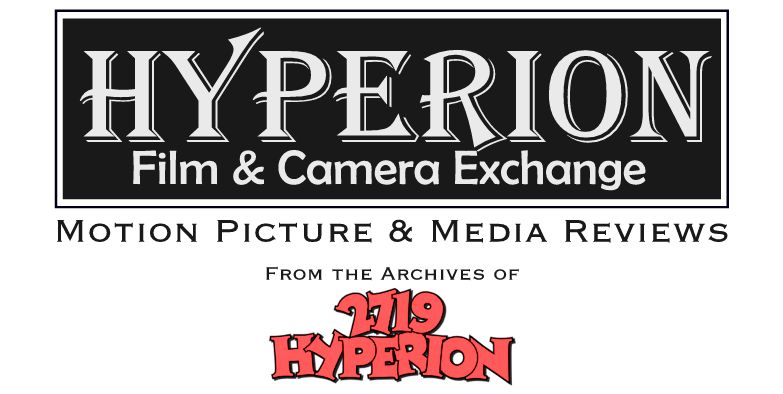 Even though it didn’t achieve statehood until 1959, the romance and exotic nature of Hawaii permeated stateside popular culture for much of the first half of the 20th century. It reached a crescendo of sorts just prior to World War II, and it was in this paradise-worshipping atmosphere that the 1937 Mickey Mouse cartoon Hawaiian Holiday was born.
Even though it didn’t achieve statehood until 1959, the romance and exotic nature of Hawaii permeated stateside popular culture for much of the first half of the 20th century. It reached a crescendo of sorts just prior to World War II, and it was in this paradise-worshipping atmosphere that the 1937 Mickey Mouse cartoon Hawaiian Holiday was born.Hawaiian Holiday likely owed some of its inspiration to another island-themed Hollywood production that preceded it into theaters by six months. The Bing Crosby musical Waikiki Wedding was a huge hit for Paramount Pictures, and featured the now classic tunes "Blue Hawaii" and the Oscar-winning "Sweet Leilani."
Hawaiian Holiday opens with the song "On the Beach at Waikiki," immediately establishing its exotic island setting. That famous tune by G. H. Stover and Henry Kalmai was one of the most popular songs of the 1930s and was introduced here by Mickey, Minnie, Donald and Goofy. Pluto was also on hand, rounding out one of the rare occasions when all of Disney’s “fab five” shared the screen in the same cartoon short.
 We are quickly presented with many of the era’s romantic conventions of Hawaiian popular culture. The characters are enjoying a beachside luau. Mickey plays the traditional slack key guitar while Minnie and Donald alternate between ukulele strumming and hula dancing. In a distinct foreshadowing of his later Sport Goofy persona, the Goof engages in a pratfall-filled surfing vignette. At the time, surfing was still generally considered uniquely Hawaiian, and was just beginning to make its migration to places like Australia and California.
We are quickly presented with many of the era’s romantic conventions of Hawaiian popular culture. The characters are enjoying a beachside luau. Mickey plays the traditional slack key guitar while Minnie and Donald alternate between ukulele strumming and hula dancing. In a distinct foreshadowing of his later Sport Goofy persona, the Goof engages in a pratfall-filled surfing vignette. At the time, surfing was still generally considered uniquely Hawaiian, and was just beginning to make its migration to places like Australia and California.But alas, this many stars is two or three stars too many. Shortly after Mickey, Minnie and Donald are featured in a comical musical interlude, the rest of short settles into focusing mainly on Goofy with his surfboard and Pluto’s antics involving a crab and a starfish. This somewhat disjointed approach is fortunately offset by the short’s wonderful details (including outrigger canoe and little grass shack) and amazing watercolor backgrounds, both hallmarks of the Hyperion Avenue studio era.
 One particular subtle and ongoing gag that I really enjoyed involved Goofy’s trademark hat. It is a well-crafted bit of plausible impossible. Despite pratfalls, high waves and underwater submersion, it, for the most part, remains firmly attached to its owner’s head. On the occasion when Goof and hat are separated, carefully orchestrated choreography reunites the two in short order.
One particular subtle and ongoing gag that I really enjoyed involved Goofy’s trademark hat. It is a well-crafted bit of plausible impossible. Despite pratfalls, high waves and underwater submersion, it, for the most part, remains firmly attached to its owner’s head. On the occasion when Goof and hat are separated, carefully orchestrated choreography reunites the two in short order.Another subtle yet interesting detail is Minnie’s portrayal as a topless hula dancer. While replete with standard white gloves and oversize shoes, only a lei adorns her upper body. Sixty years later she would again travel to Hawaii at the conclusion of Runaway Brain, but would opt for a more conservative two piece suit for that trip.
 Author DeSota Brown notes in the book Hawaii Recalls, “Films used Hawaii for all sorts of celluloid action, from tap dancing hula girls and angry volcanoes to murder mysteries and communist plots. These weren’t strictly intended to promote the islands as such, but they helped to do the job nonetheless. The fact that these movies were usually utterly unrealistic bolstered, instead of diminished, their selling abilities.”
Author DeSota Brown notes in the book Hawaii Recalls, “Films used Hawaii for all sorts of celluloid action, from tap dancing hula girls and angry volcanoes to murder mysteries and communist plots. These weren’t strictly intended to promote the islands as such, but they helped to do the job nonetheless. The fact that these movies were usually utterly unrealistic bolstered, instead of diminished, their selling abilities.”To a similar extent, Hawaiian Holiday equally served to portray and promote that romantic notion of an unspoiled island paradise of a now bygone era, albeit in animated form.
Images © Walt Disney Company


0 comments:
Post a Comment